Travelling in Switzerland by train
For a short and sweet Swiss sojourn, this easy rail itinerary has culture and fine dining in abundance.
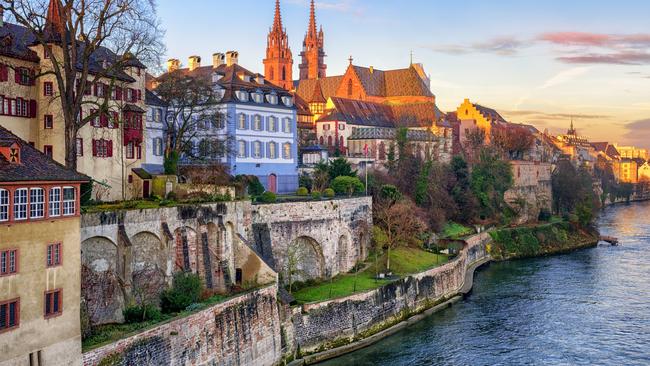
Every season in Switzerland is a good season, but this three-day itinerary, focusing on dynamic cities and the rail routes between them, is optimal for long spring and summer days. You can align with Art Basel, one of the country’s most famous cultural exports happening June 16-19, or you can dodge that weekend’s surcharges and still get hefty doses of innovative art and rich cuisine.
An upfront investment in a three-day Swiss Travel Pass, from about $365 a person, covers unlimited intercity travel by train, most public transit networks, water taxis and admission to more than 500 museums.
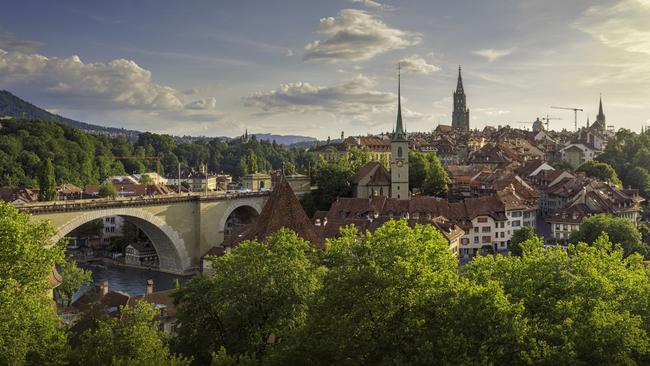
DAY 1: ZURICH TO BERN TO BASEL
Zurich’s airport greets you with concrete international-style terminals linked by a peppy tram playing the sounds of yodellers and cows mooing. From there it’s a little over an hour to Bern, Switzerland’s capital, aboard the SBB intercity express train. Once you arrive in Bern, stow your bag in one of the station’s lockers and saunter over to the medieval centre (about 10 minutes away), built on a hill overlooking a crook of the Aare River. Wide pedestrian-friendly streets framed by sandstone arcades lead to the gold-flecked face of the Zytglogge clock tower, where mechanical puppets animate every hour, as they have for centuries. Down the street, descend into the cavernous Kornhauskeller for early lunch. Frescoed, vaulted ceilings rise above plates of Bernese pork and cheese.
Basel, wedged between France and Germany an hour north of Bern, also features an old town with a Gothic cathedral overlooking a river, but our focus here is more contemporary. Take the No 8 tram from the station to Hotel Krafft Basel, the sleekly furnished occupant of an 1800s building.
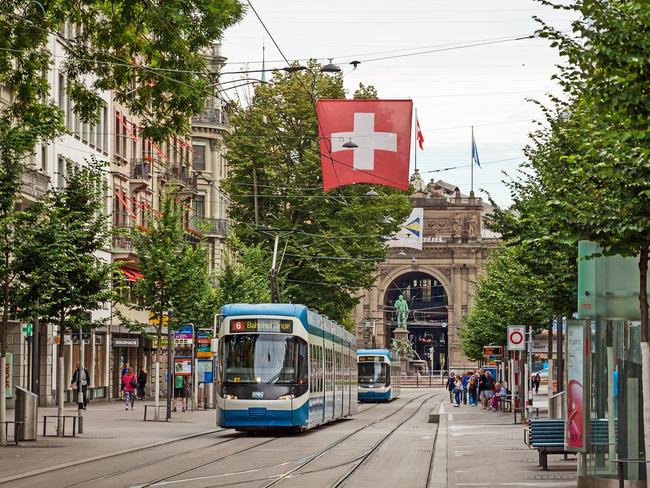
Drop your bag then hop back on the No 8 train for the 20-minute ride over the German border to the terminus at Weil am Rhein. There, you’ll find a sidewalk dotted with revolving display cases of miniature furniture, leading you like breadcrumbs to the sprawling campus of the Vitra Design Museum. With buildings by star architects such as Zaha Hadid and Tadao Ando, this working factory also offers guided tours. The highlight is the minimalist red brick Schaudepot. Designed by local heroes Herzog & de Meuron, it warehouses and displays a collection of furniture masterworks from more than a century of design. The Schaudepot’s gift shop, as well as the showroom on the north side of campus, will claw at your wallet.
Leaving the grounds, follow artist Tobias Rehberger’s 24 sculptures through undulating meadows on a 45-minute walk (get the map at 24Stops.info). The walk leads to Fondation Beyeler, a contemporary art centre set inside a Renzo Piano-designed building and surrounded by fields and ponds.
Back in central Basel (via the No 6 tram), walk about 10 minutes to Bundesbahn, a train-themed restaurant behind the central station, for some traditional spaetzl or schnitzel. Then have a nightcap a couple blocks away at Werk 8, a bar in a former machine factory that’s part of a burgeoning creative neighborhood.
DAY 2: BASEL TO ZURICH
Back on the intercity train, an hour-long morning ride returns you to Zurich. Take a taxi to the Dolder Grand, a luxe hilltop chalet that originally opened in 1899 and acquired sinuous modern wings during a 2008 renovation. Check in and leave your bag but resist the urge to park yourself on the terrace, overlooking the city and Lake Zurich – there will be time for that later. For now, take another taxi back down the hill for lunch at the bustling food hall built beneath the refurbished railway arches at Im Viadukt.
A few blocks away, the Lowenbraukunst is a former brewery-turned-cutting-edge arts centre, including exhibition spaces from homegrown powerhouse Hauser & Wirth. Take the tram 20 minutes southeast to the next stop on the itinerary, the Kunsthaus Zurich, now the largest art museum in Switzerland following the October 2021 opening of a new wing by David Chipperfield. Very expensive-looking rooms of concrete, wood and brass showcase impressionist masterpieces and explore their controversial history: Emil Bührle assembled the collection with the wealth he earned as a Nazi arms dealer. The water lilies in the Kunsthaus’ Monets aren’t the only ones going for a painterly float. Walk 10 minutes down the road to Zurich’s waterfront, where in warm weather, residents dive right in from public bathing pavilions like those at Seebad Utoquai and Strandbad Tiefenbrunnen. The water is typically as clear and placid as a swimming pool, but few can boast these views, with Zurich’s spires to the north and crystalline alps to the south.
Stroll the lakefront park Zurichhorn, passing Le Corbusier’s modernist pavilion, on the way to catch the No 2 or 4 tram that glides from the leafy streets of the upmarket Seefeld neighbourhood toward the tangled lanes of the old city centre. Aim to reach the Lindenhof hilltop park at the top of the hour to have your panoramic view set to the clanging of dozens of church bells. After stopping back at the Dolder Grand to freshen up and have an aperitif al fresco, head to Kronenhalle, about 3km away. A nearly century-old institution, the dining room heaves with dark wood panelled walls, white tablecloths, white-jacketed servers and hearty, meaty dishes.
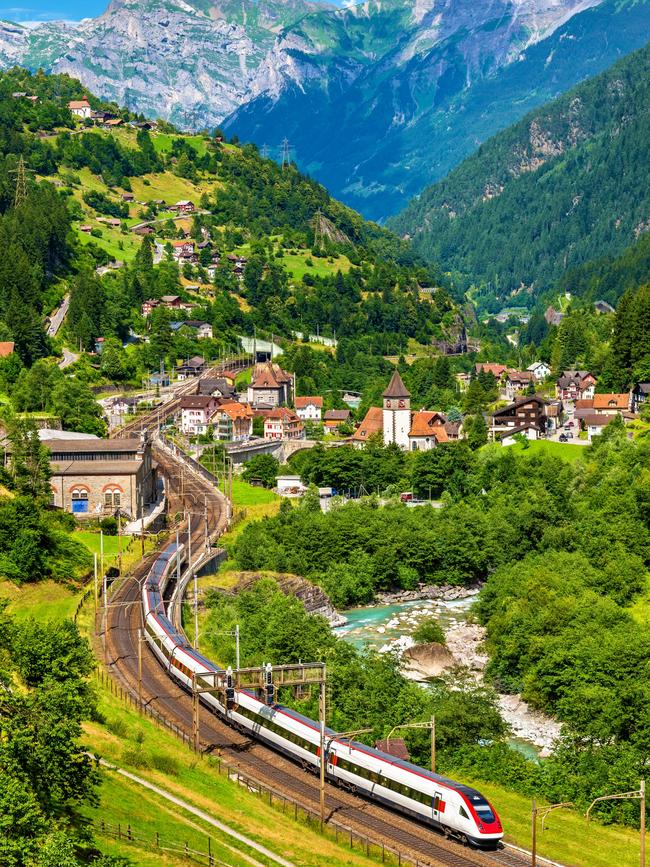
DAY 3: ZURICH TO LUCERNE TO LUGANO
In the morning, on the way to the train station, dip into Confiserie Sprungli’s flagship chocolate shop for some intensely flavoured mini macarons called Luxemburgerli. Then stop at Fabrikat for heirloom home goods from legacy European manufacturers before boarding a 50-minute train to Lucerne. Once you arrive, you’ll embark on the Gotthard Panorama Express, a half-day journey from central Swiss-German territory down to the Italian-speaking south. The first leg is aboard a graceful steamboat and the second by glass-domed train (the rail company handles the transfer of your luggage from start to finish).
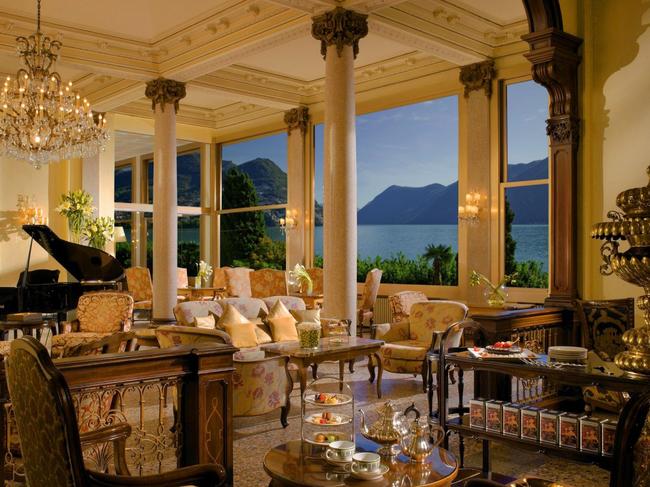
But give yourself the morning to amble along Lucerne’s mirror-like lake, crisscrossing the 14th-century wooden bridge before peeking into the whitewashed and gloriously gilded Jesuit Church, which displays rare religious flair in a country primarily of Reformation austerity.
In the harbor you begin your boat trip, passing gentle mountains and the towns that clamber up them from the shoreline. Eat lunch onboard at the full-service restaurant. The train leg winds through verdant valleys and mountainside villages until you arrive late afternoon in Lugano. Check into the Hotel Splendide Royal, set along the tree-lined lakefront promenade. Then stroll 10 minutes south to board the funicular to the top of Mount San Salvatore around sunset to watch the whole place bask in the golden hour.
This region has a history of serving homestyle dinners in rustic “grotto” restaurants, and tonight you’ll go to Grotto della Salute, but instead of sitting in a cave you’ll be on its breezy terrace. Back at the hotel, fall asleep amid belle epoque grandeur. At midnight, the travel pass for your chariot expires, which is just as well. Lugano is too lovely to just roll through. Odds are, you’ll want to linger.
THE WALL STREET JOURNAL

To join the conversation, please log in. Don't have an account? Register
Join the conversation, you are commenting as Logout